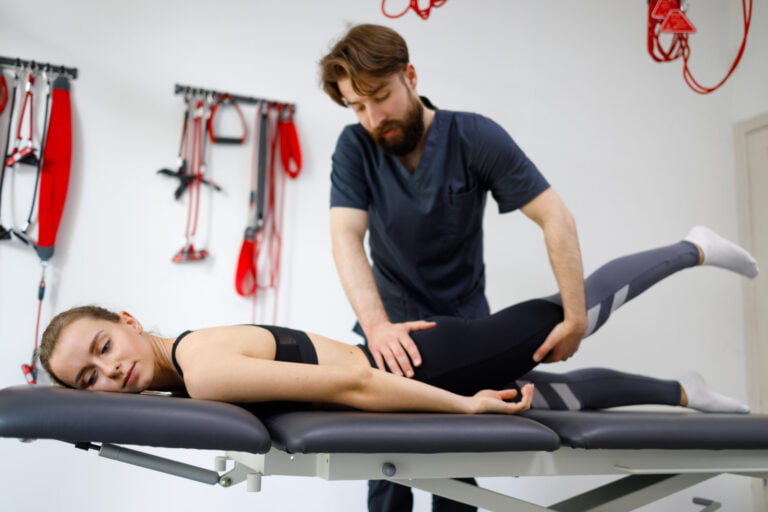Approximately 80 percent of adults will experience back pain in their lifetime. Often, this pain is associated with aches that come and go. However, some adults will experience a spinal condition that causes this discomfort.
Scoliosis is one of these conditions, affecting two to three percent of the population. While most people are diagnosed with scoliosis during childhood, it can develop during adulthood as well. Fortunately, treatment is available. This guide will break down the basics of scoliosis and how you can find relief.
What Is Adult Scoliosis?
Scoliosis is characterized as the abnormal curve of the spine. While everyone’s spine has a natural front-to-back curve, some people develop a curve that goes side-to-side. The severity of this curve can vary greatly. Scoliosis can be subtle, so some patients experience little discomfort and don’t require treatment. However, the curve can also be as severe as 100 degrees or more.
While adults can develop scoliosis, this condition may also be a result of undiagnosed childhood scoliosis. Most cases of adult scoliosis occur in either the upper (thoracic) spine or in the lower (lumbar) spine. While children and teenagers may experience few to no symptoms, adults may have more discomfort due to spinal degeneration. These symptoms often include stiffness, back pain, a bulge in the back, numbness in the extremities, and shooting pain in the leg. Your doctor or chiropractor can diagnose these symptoms as scoliosis through an X-ray or MRI.
How Can You Treat Scoliosis?
Once you learn that you have scoliosis, it’s important to find a treatment plan that suits your needs. Your doctor will likely recommend treatment based on the severity of the spinal curve, as well as factors like age. Here are some of the most common treatments that might ease your symptoms.
Chiropractic Care
Adults with minor scoliosis can experience back pain as a result. A chiropractor may be able to address this symptom. However, keep in mind that chiropractors can’t cure or correct scoliosis. They can use methods like spinal adjustments, heat therapy, massage techniques, and other methods to decrease pain and increase joint mobility.
If you decide to see a chiropractor, you’ll likely need to schedule multiple appointments per week to start. So, it’s helpful to find a chiropractor near you.
Non-Surgical Intervention
Those with minor to moderate scoliosis may benefit from non-surgical treatment methods. This can include exercise, physical therapy, injections, braces, and medication. Doctors can also observe the curve of your spine and symptoms over time, adjusting treatment as necessary.
Scoliosis Systems is a great example of a team offering such treatments. These doctors address the symptoms of scoliosis through targeted exercises, braces, muscle rehabilitation, and pain-relieving therapy. Patients receive an individualized treatment plan based on their specific health needs.
Surgery
When a non-surgical intervention has failed, your doctor might recommend surgery to stabilize the spine. This can also be an option for individuals who are disabled as a result of their scoliosis. Some common surgical treatments include:
- Surgical Stabilization: During this procedure, the surgeon uses a series of screws, hooks, or wires to support the spine. This allows the spine to stabilize and align on its own.
- Microdecompression: This surgery involves making a small incision to remove part of the vertebrae and create more space for the nerves. By doing so, the doctor reduces nerve pressure. However, it’s important to note that this operation can present a risk of the spinal curve worsening.
- Fusion: Through this treatment, the surgeon straightens the spine with metal rods and uses a bone graft to fuse the vertebrae together. The procedure takes several hours and requires several weeks off for recovery.
Since these are just some of the available treatments for adult scoliosis, it’s important to talk to your doctor about the best treatment course for you. Doing so can help you find relief from your symptoms and enjoy a more active lifestyle. Whether this means gentle chiropractics or more serious intervention, the effort will likely be worth it over time.






